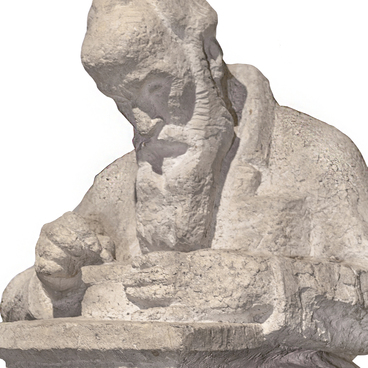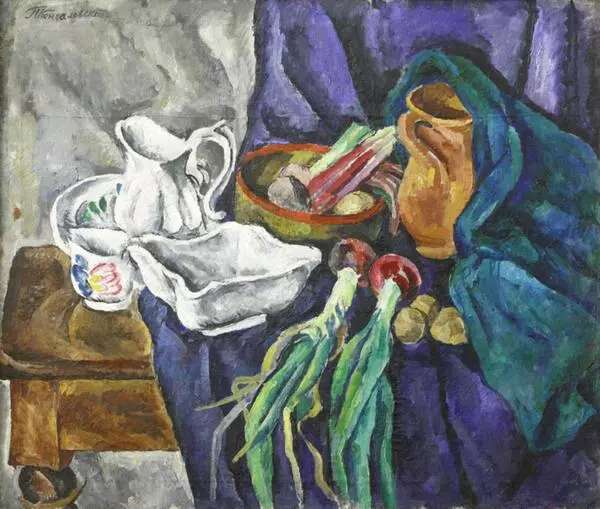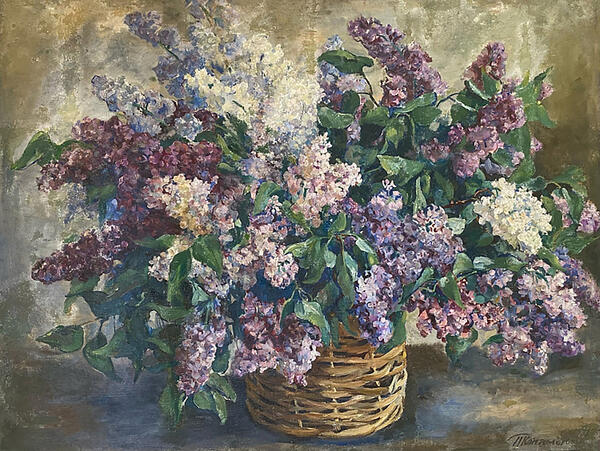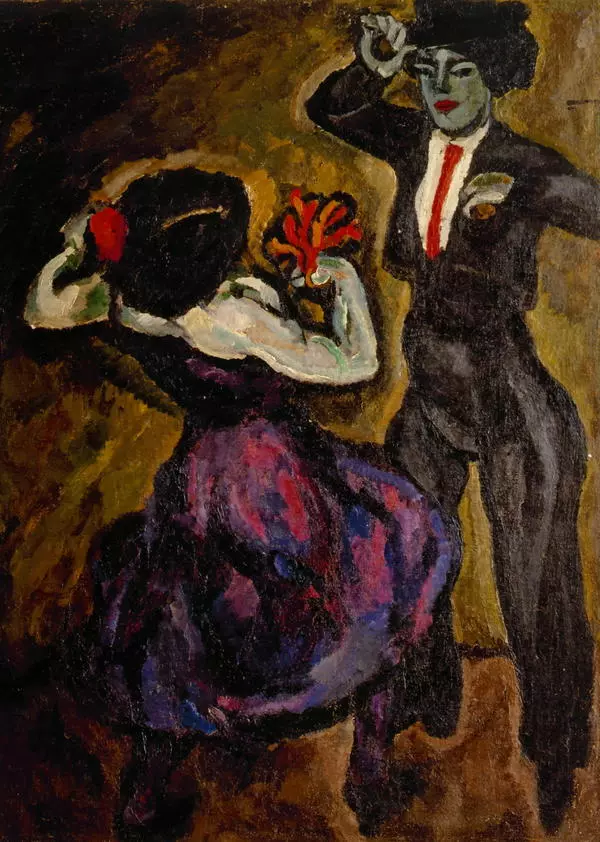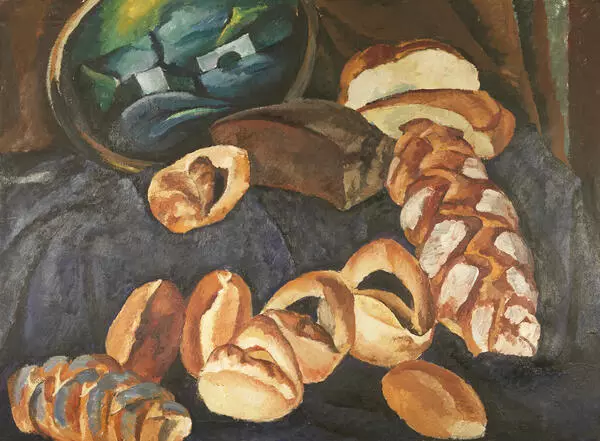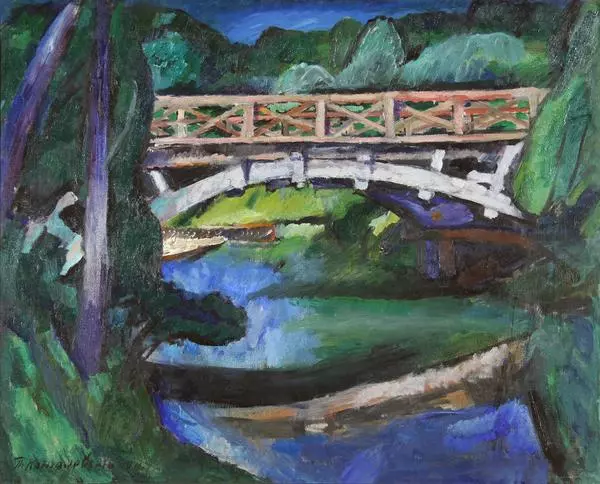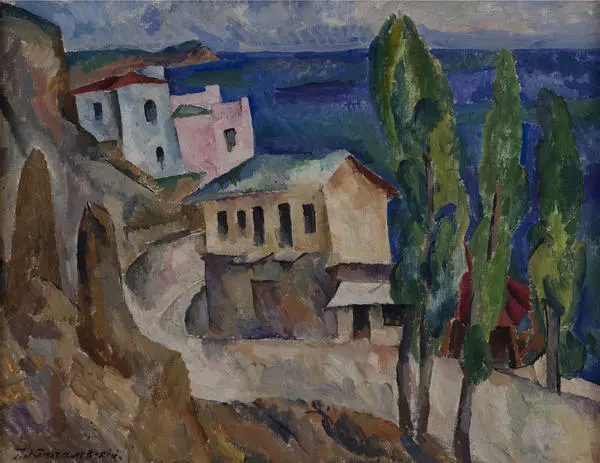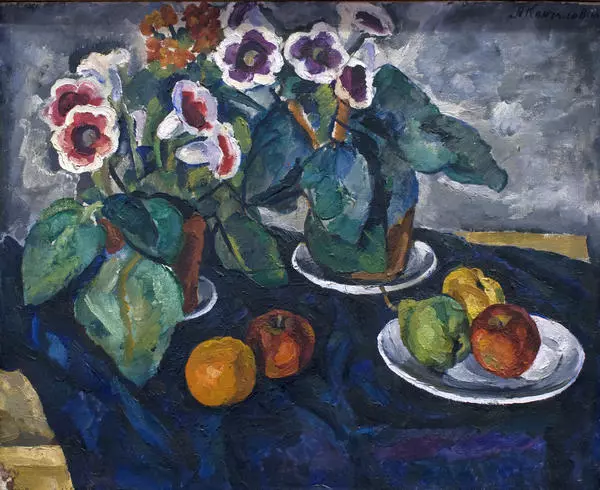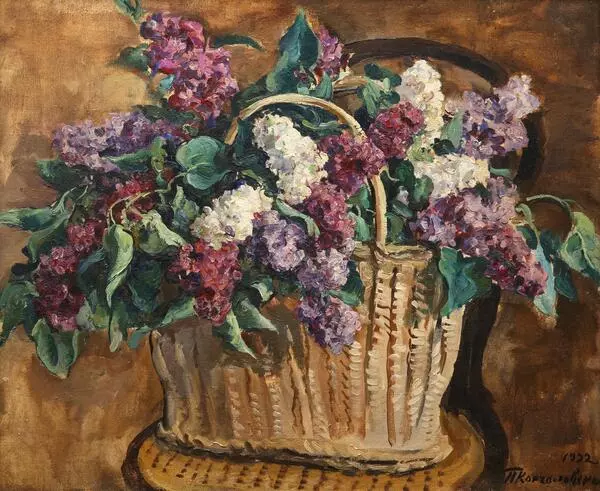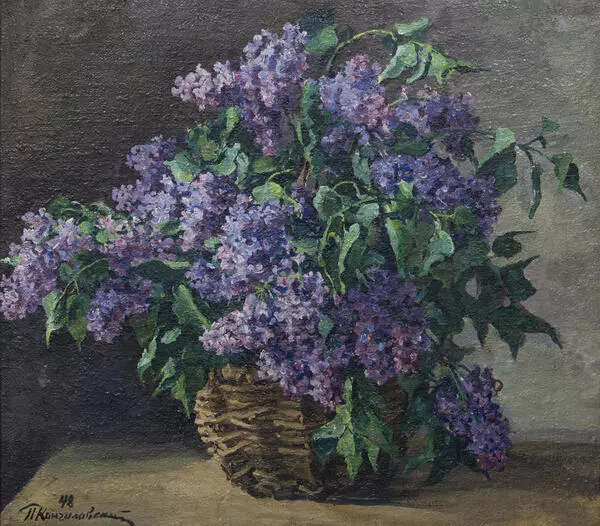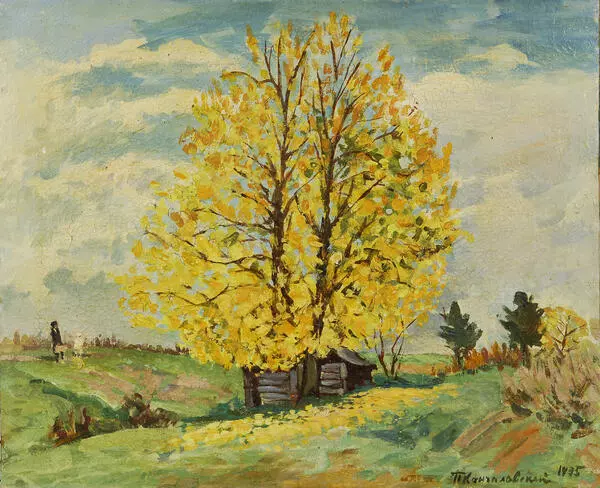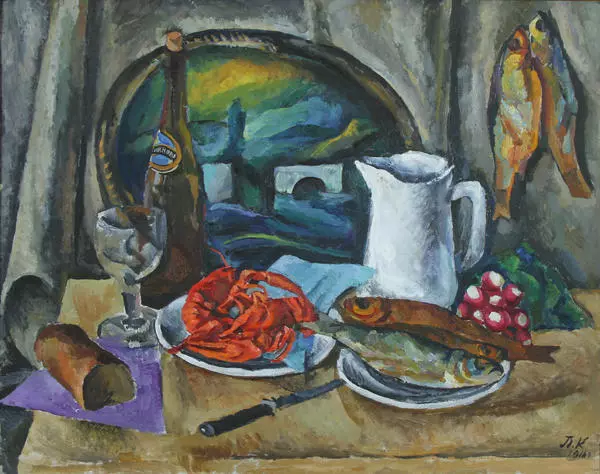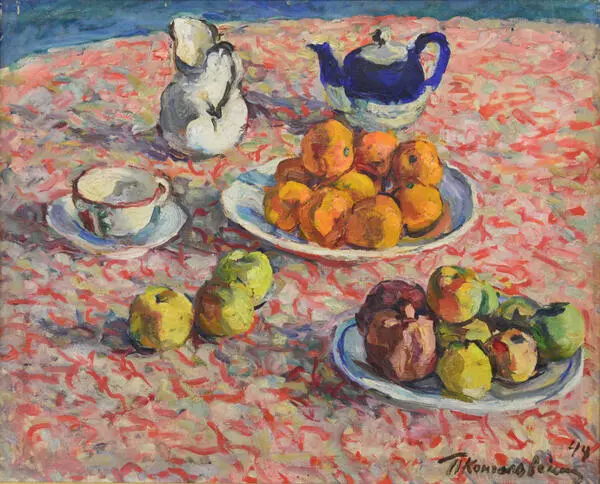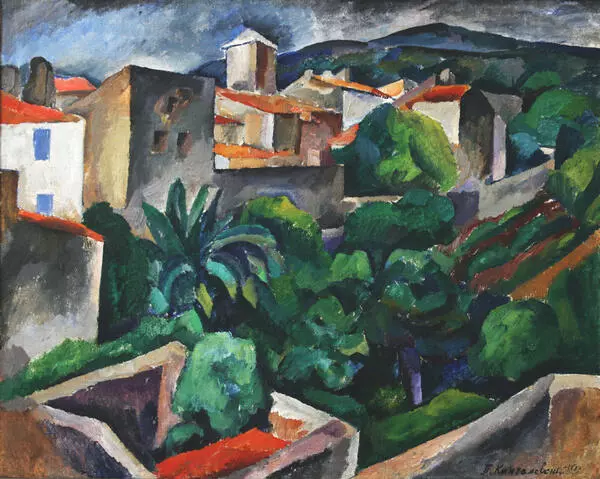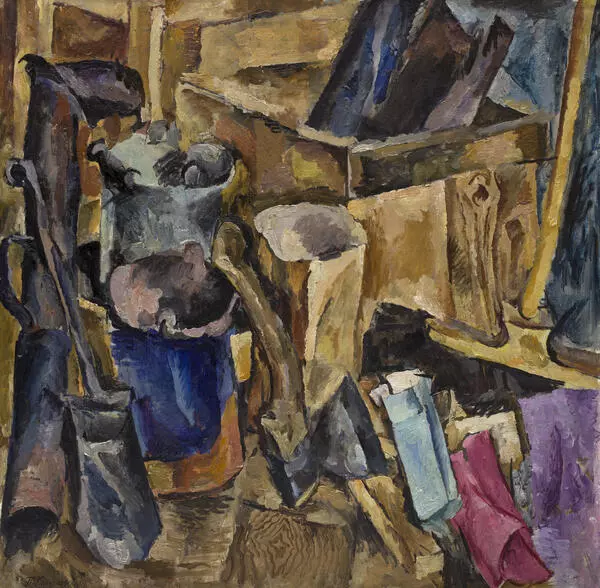The still life ‘Flowers on the Bench’ is not at all characteristic of Pyotr Konchalovsky’s artwork, for his most famous paintings were created at the peak of Russian avant-garde. Artists of that movement broke the boundaries of public taste and left viewers perplexed with their simplified forms and complicated concepts. Konchalovsky was one of the founding members of the Jack of Diamonds art group that was famous for its colorful paintings strongly influenced by Paul Cézanne.
When the Soviet government imposed Socialist Realism as the only acceptable art style, many avant-garde painters had to abandon their manner of painting. Konchalovsky was no exception. In the 1920s he turned to realism with its most realistic depiction of life.
Remarkably, still lifes were persistent in Konchalovsky’s artwork throughout his whole life. In his avant-garde period, this genre was used for experiments: the artist would paint fruit on a plate in vivid dense colors, simplify their forms and emphasize their contours. During the years when the authorities forced artists to choose government-friendly subjects, Konchalovsky found his consolation in still lifes. He did not glorify the Soviet administration in his paintings but managed to stay in their favor by choosing neutral themes.
Konchalovsky even became one of the first to receive the Stalin Prize due to his considerable reputation and great talent as a realistic painter. But this success was just a camouflage for a painful compromise. Without criticizing the authorities or giving any straightforward opinion, Konchalovsky bitterly confessed:
When the Soviet government imposed Socialist Realism as the only acceptable art style, many avant-garde painters had to abandon their manner of painting. Konchalovsky was no exception. In the 1920s he turned to realism with its most realistic depiction of life.
Remarkably, still lifes were persistent in Konchalovsky’s artwork throughout his whole life. In his avant-garde period, this genre was used for experiments: the artist would paint fruit on a plate in vivid dense colors, simplify their forms and emphasize their contours. During the years when the authorities forced artists to choose government-friendly subjects, Konchalovsky found his consolation in still lifes. He did not glorify the Soviet administration in his paintings but managed to stay in their favor by choosing neutral themes.
Konchalovsky even became one of the first to receive the Stalin Prize due to his considerable reputation and great talent as a realistic painter. But this success was just a camouflage for a painful compromise. Without criticizing the authorities or giving any straightforward opinion, Konchalovsky bitterly confessed:



